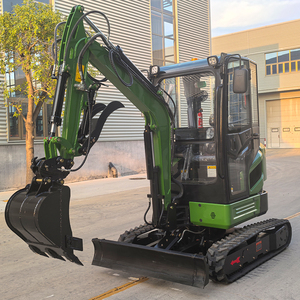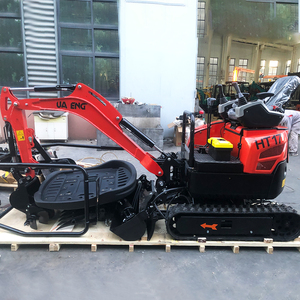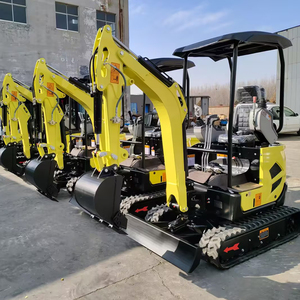
All categories
Featured selections
Trade Assurance
Buyer Central
Help Center
Get the app
Become a supplier

(698 products available)

































Three-wheeler dirt bike, also known as trike bikes or ATC (All-Terrain Cycle), are all-terrain vehicles that were popular in the 1970s and 1980s. They have two wheels in the back and one in the front. Their function is to provide a more stable and safer experience than riding a dirt bike. The 3-wheeler dirt bike comes in various sizes and engine sizes to suit different riding styles.
Recreational Trike
`These trike bikes are designed for recreational activities such as off-road riding, trail riding, and motocross. They are often lightweight and agile, allowing riders to have fun and experience thrilling rides in various terrains. Some popular models include the Honda CRF1000L Africa Twin Adventure Sports ES DCT, Yamaha Tracer 9 GT, and Harley-Davidson CVO Tri Glide.
Utility Trike
Utility Trike bikes are designed for more heavy-duty work and tasks. They are often used in agricultural settings, forestry, and other industrial applications where transporting goods and people is essential. Utility Trike bikes have more robust engines and can carry larger payloads compared to recreational Trike bikes. Some popular models include the Polaris Sportsman 570, Yamaha Grizzly 700 FI EPS SE, and Arctic Cat Alterra 500.
Sport Trike
Sport Trike bikes are designed for high-speed performance and agility on paved roads. They typically have more powerful engines, advanced suspension systems, and aerodynamic designs. Sport Trike bikes are suitable for racing, spirited riding, and performance-oriented enthusiasts. Some popular models include the Kawasaki Ninja H2, Suzuki GSX-R1000, and Honda CBR1000RR.
Engine Size
3-wheeler dirt bikes have different engine sizes that range from 110cc to 250cc or more. The engine size determines the power and speed of the dirt bike. A bike with a larger engine size will offer more power and speed compared to the one with a smaller engine size.
Seat Height
Seat height is another specification that is considered when buying a dirt bike. The seat height of 3-wheeler dirt bikes ranges from 26 inches to 34 inches or more. The seat height affects the rider's comfort and ability to reach the ground. A bike with a higher seat height will be difficult to ride for short people.
Weight
3-wheeler dirt bikes weigh around 150 pounds to 300 pounds or more. The weight of the bike affects its handling and performance. Heavier bikes are more difficult to handle, but they offer more stability.
Tires
The tire size and type also differ in 3-wheeler dirt bikes. The tires are designed for different terrains such as sand, mud, and rocks. The tire size plays a major role in the bike's ground clearance and ability to roll over obstacles. The tire size of these bikes ranges from 8 inches to 14 inches or more.
Brakes
3-wheeler dirt bikes come with different brake types, including hydraulic and mechanical disc brakes. Some bikes feature drum brakes. The brakes are designed for different riding styles and terrain conditions.
Below are some maintenance tips for 3-wheeler dirt bikes:
With various
Rider's Age and Size
For younger or smaller riders, opt for ATVs designed specifically for youth with lower power output and smaller size. Adult riders should consider their skill level and choose an ATV that matches their experience.
Type of ATV
ATVs come in different types and determine the purpose they serve. For instance, utility ATVs are used for transporting goods in farms and other work-related activities. Sports ATVs are used for racing and recreational purposes. Trail ATVs are designed for off-road riding on trails. Establish the needs and source accordingly.
Engine size
When sourcing 3-wheeler dirt bikes for adults, consider those with larger engines. For instance, ATVs with 250cc-700cc are ideal for most adults. Smaller engines are suitable for beginners or occasional riders.
Suspension and Handling
When choosing a 3-wheeler dirt bike, consider those with good suspension and handling for better control. Bikes with independent suspension handle well on rough terrain. Also, consider the skill level of the target clientele. Beginners should go for bikes that are easy to handle, while experienced riders can handle more powerful bikes.
Purpose
Establish the purpose of the bike. Is it for racing, recreation, or utility work? Different purposes require different features. For example, a racing ATV will need to be lightweight and have high speed, while a utility ATV can carry cargo and have a more comfortable ride.
Budget
Establish the amount and source for ATVs within the budget. ATVs come with different price tags depending on the features and the purpose they serve.
Replacing parts of a dirt bike is a DIY-friendly activity that can help save on maintenance costs. With the right tools and dirt bike maintenance manual, dirt bike owners can handle basic repairs and replacements. Some of the tools required include wrenches, sockets, screwdrivers, pliers, hex keys, torque wrench, and shop towels. Below is a guide on how to replace some common 3-wheeler dirt bike parts:
Replace the air filter
Locate the air filter by following the air intake tube from the carburetor. Unscrew the bolts holding the air filter cover using a screwdriver. Remove the old filter and clean the air box. Take a new filter and put it in the air box. Tighten the cover bolts and ensure the seal is tight.
Change engine oil
Run the engine for a few minutes, then turn it off. This helps the oil warm up, making it easier to flow. Locate the oil drain plug at the bottom of the engine. Use a wrench to loosen the plug and let the oil flow into a container. After all the oil drains, tighten the plug. Pour new oil into the oil-fill opening using a funnel. Wipe any excess oil with a shop towel.
Replace spark plugs
Use a socket wrench to remove the old spark plug from the engine's cylinder head. Insert a new spark plug into the socket and carefully lower it into the hole. Tighten it with the wrench until it's snug.
Change tire
Loosen the axle nut and use a jack to lift the dirt bike. Open the valve and let all the air out of the tire. Use tire levers to separate the tire from the rim. Fit the new tire onto the rim and ensure it sits properly. Inflate the new tire and ensure even pressure all round. Tighten the axle nut.
Q: Can adults ride 3 wheeled dirt bikes?
A: Yes, adults can ride 3-wheeled dirt bikes. These bikes, often called ATVs (All-Terrain Vehicles) or trikes, are designed for various terrain, including dirt trails. It's essential to choose an ATV appropriate for the rider's size and experience level for safety and optimal performance.
Q: Are 3 wheeled dirt bikes good for beginners?
A: 3-wheeled dirt bikes can be suitable for beginners, especially those designed as ATVs (All-Terrain Vehicles). They offer stability on diverse terrain, making them a good choice for novice riders. However, it's crucial for beginners to receive proper safety training and understand the vehicle's handling characteristics.
Q: Are 3-wheeled dirt bikes street-legal?
A: Three-wheeled dirt bikes are not street-legal. However, some states allow certain modified ATVs street use if they meet specific criteria (like emissions and safety). Always check local laws before taking an ATV on the road.